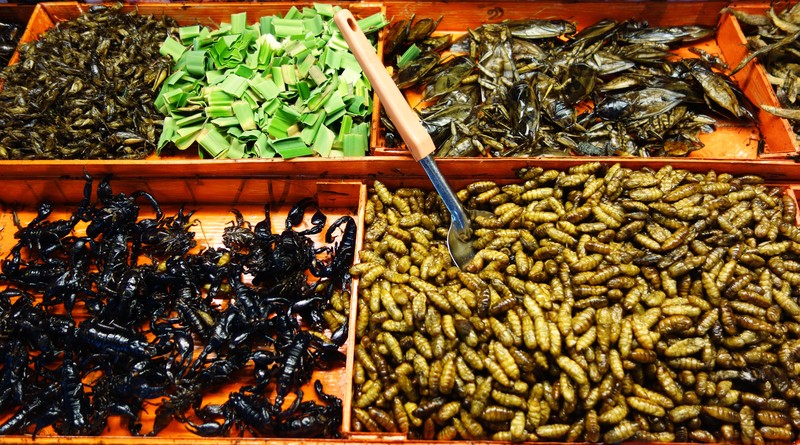The following answers the age-old question. Why should we eat bugs, which bugs are safe to eat, and how do we identify them?
Why Eat Bugs?
Short answer:
Insects are surprisingly nutritious, easy to acquire, and fun to eat. Why pass up such a readily-available food source? Most of the world, except the Northwest-European-based cultures, already embrace entomophagy, so we North-Americans could really embrace it, too.Long answer:
The Food and Agriculture Organization of the United Nations released a study in May, 2013, showing how entomophagy might help save the world. See Edible Insects: Future prospects for food and feed security. ? Some activist-entomophagists claim eating bugs will help save Earth’s environment by reducing greenhouse gases, and bug-eating could solve world starvation. I’m not an anthropomorphic-global-warming advocate, and I have reasons to be skeptical of the world hunger claims. Studies have shown that almost half the food produced in the world is wasted, so we should be able to feed everyone.
Eating insects can help the environment by helping cut back on pesticide use (just like eating your weeds can help cut herbicide use, but that’s another topic). A drawback to using entomophagy as your pesticide is you usually have to let the bugs do some fair damage to your gardens or lawns before they reach a harvestable size or quantity.Which Bugs are Safe to Eat?
When most people talk about entomophagy, they mention chocolate-covered stuff, exotics like emperor scorpions, witchiti grubs, mopane worms or Thai waterbugs. You’ll hear of scorpions and crickets embedded in candy suckers or tiny bags of spiced dried crickets or mealworms. These are fine to eat, but expensive, heavy on packaging, and shipped from around the world. We’ve got a wealth of edible bugs all around us, free for picking. The biggest obstacle to our exploiting them as a food source is the lack of documentation on those familiar backyard critters.How does one decide what’s edible and what’s not?
Don’t just eat a handful of collected bugs because you’ve heard you can eat them. There are lots of reasons to be informed before diving into entomophagy.Some insects, like wasps and bees, can cause allergic reactions that kill. Some can cause skin irritations. Some cause delayed severe upset of digestive tracts or convulsions. Environment is a big factor, as is the answer to the question, “How did it die?”
I’ve heard some claim this phrase as theirs and others will call it ‘an old saying’. I’ll say I read it first in The Eat-A-Bug Cookbook. “Red, orange, yellow, avoid that fellow. Green black or brown, wolf it down.”Like with poison ivy and “leaflets three let it be”, it’s not true in every instance. If we left leaflets three alone, we’d never know about strawberries or raspberries or beans. If we wolfed down green black or brown, we might just go into a coma over a black blister beetle or our throats could swell up to the point of suffocation due to the stinging spines on a green and brown saddleback caterpillar.
The best way to find what bugs are safe to eat and what ones might be unsafe is to study.
Read accounts on-line, in books and talk to people who have experience.Some printed resources include:
◾Vincent Holt’s Why Not Eat Insects
◾David George Gordon’s Eat-A-Bug Cookbook
◾Ronald L. Taylor, Barbara J. Carter and John Gregory Tweed’s Entertaining With Insects
◾Peter Menzel and Faith D’Aluisio’s Man Eating Bugs
◾The Food Insect Newsletter
There are many sources on-line that can also help if you would like to embrace the Entomophagy life style.
However, if you would like to read more from the author of the above please go to Common Sense Homesteading. He knows a wide variety of topics including an itemized list of bugs he knows are safe, how to catch them, and also how to cook beetles, May flies, cicadas and others! The website is very informative!
